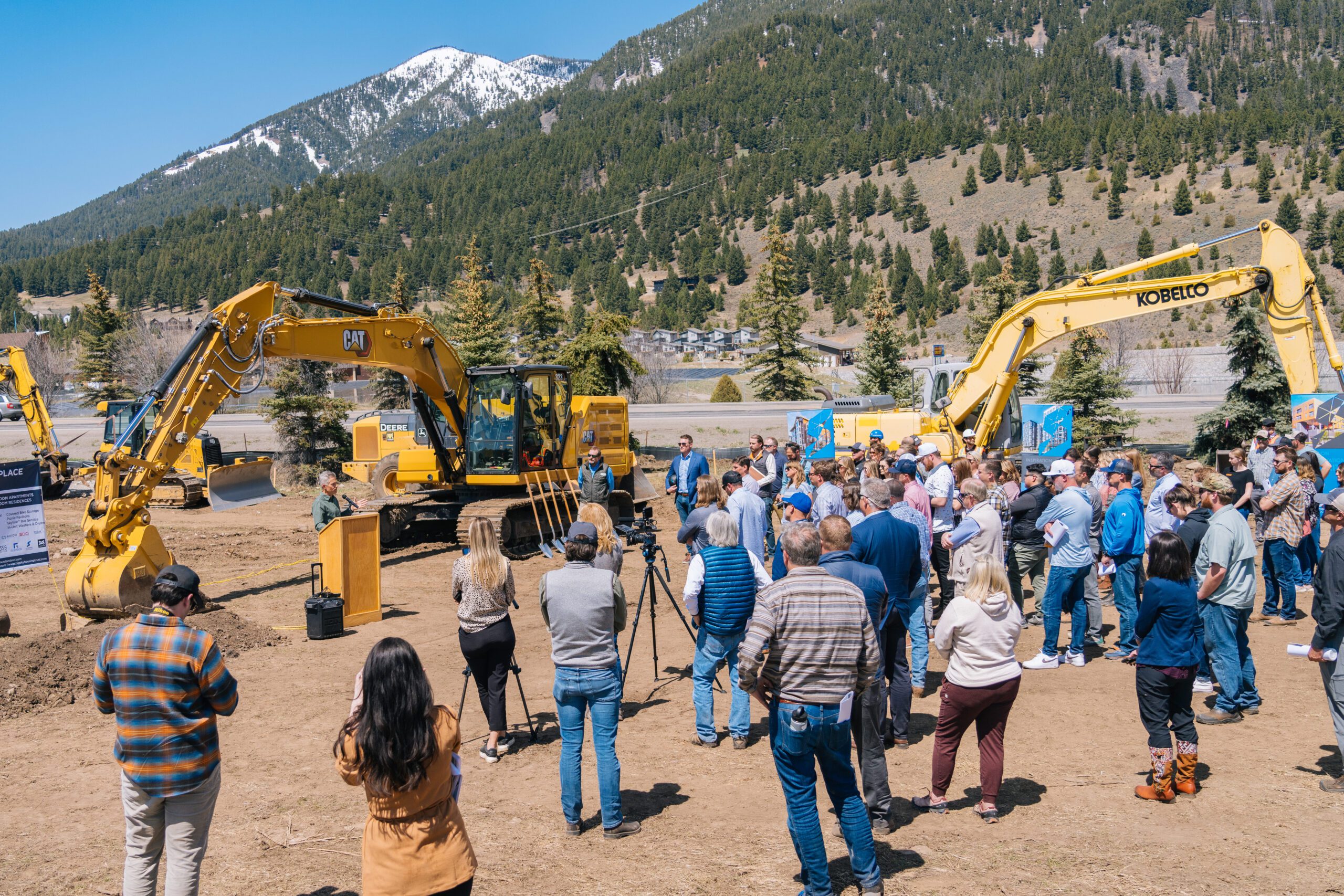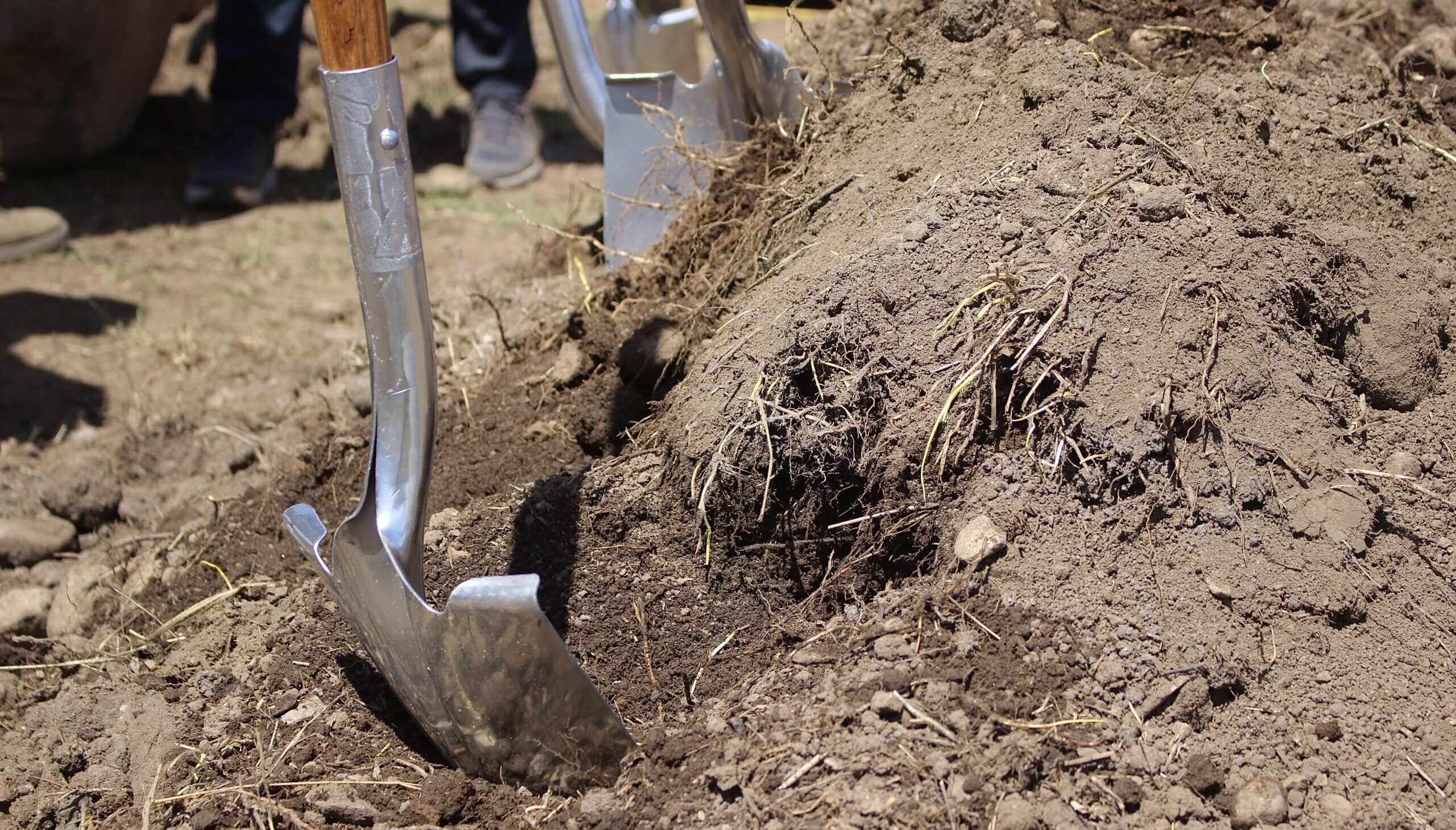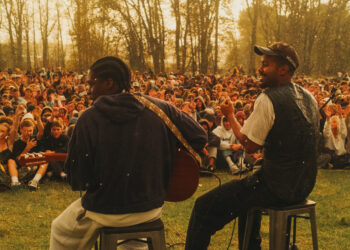Lone Mountain Land and Housing Trust break ground on RiverView Apartments
By Jack Reaney STAFF WRITER
Local leaders dug shovels into Big Sky’s next major workforce housing project on Wednesday, May 3.
Construction of the RiverView apartment complex “will definitely be known for years to come as a milestone for the Big Sky Community,” said David O’Connor, Big Sky Community Housing Trust executive director. He took the podium to welcome attendees, adding context to the sunny spring afternoon.
RiverView will include 97 units, totaling 387 bedrooms reserved for income-qualified members of Big Sky’s resident workforce. One quarter of those units will be rented by the Housing Trust—administered federally by the Low-Income Housing Tax Credit Program and on a state level by the Montana Board of Housing.
To gain LIHTC eligibility, those renters will need to earn an average of 60% of the area median income, which equates to less than $40,000 annually in Big Sky, and work full-time in the resort area district boundary. Rent will be set at 33% of total income.
The remaining three quarters of RiverView units will be owned and operated by Lone Mountain Land Company, a primary Big Sky employer that recently opened its Powder Light Apartments across the street. Some of LMLC’s RiverView units have been built already using modular construction—offsite in Boise, Idaho—and will be ready for occupancy next winter.
A community priority
In a fast and efficient speech, O’Connor told the story of the Housing Trust’s recent action.
“Our need is great, and our goals are ambitious,” he said, pointing out that Big Sky needs 1,000 deed-restricted, affordable homes, which is expected to cost more than $100 million over the next decade.

The Housing Trust cut its first ribbon in June 2019, upon completion of 52 single-family townhomes in the MeadowView condominiums. MeadowView is exclusive to income-qualified individuals who work full-time in Big Sky.
After MeadowView, the housing trust targeted deed-restricted long-term rentals. This led to a partnership with Missoula-based Blue Line Development, which brought experience building income-restricted housing through LIHTC.
BSCHT applied for funding through the Montana Board of Housing. Seeing that the Lone Mountain Land Company had recently acquired the RiverView parcel, BSCHT pursued Resort Tax funding to purchase a portion of that land and build 25 LIHTC apartments.
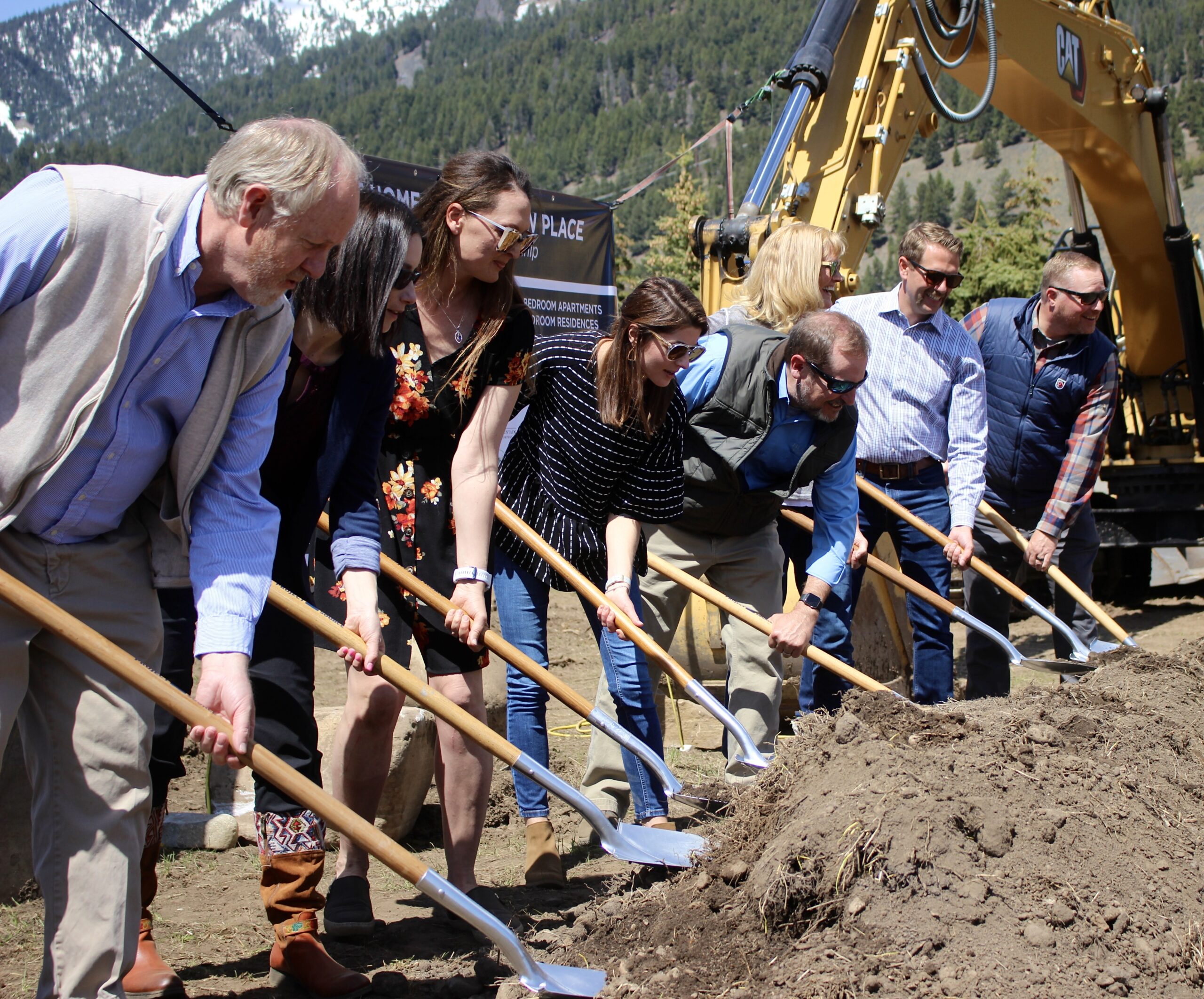
Matt Kidd, Managing Director of CrossHarbor Capital Partners and Lone Mountain Land Company, also spoke at the groundbreaking ceremony.
“The housing problem in Big Sky is big. It’s real,” Kidd said. “We’ve been working to make Big Sky more livable for more locals and [workers].”
Kidd said that from 2015 to 2020, even before Big Sky’s housing challenge was accelerated by COVID-19, the Big Sky community lost about 1,000 units of housing to short-term rentals.
“We are playing a lot of catch-up,” Kidd said. “And we acknowledge we have a lot of work to do… RiverView is putting a major dent in the problem.”
RiverView fits into LMLC’s multi-year effort to build a wide spectrum of community-based housing, Kidd said. Between Gallatin Gateway and Big Sky, LMLC has invested over $300 million to create more than 480 long-term rentals and house 1,600 local workers.
“We have plans to develop another 900 units,” Kidd said, referring to the next decade. “Reality is, there’s a vision for another $600 million of capital to be mobilized to invest in housing for this community—on land that we essentially already have access to.”

He added that community partnerships will remain integral in the process—both Powder Light and RiverView projects were enabled by Resort Tax, the Big Sky County Water and Sewer District and the Housing Trust.
The 1% difference
The nonprofit Housing Trust has leverage in water and sewer rights.
It’s a housing-focused bargaining chip, awarded by Big Sky County Water and Sewer District and Resort Tax when Big Sky voters chose in 2020 to enact an additional “1% for infrastructure” resort tax that will be in place until 2032. The additional money raised will fund 60% of the BSCWSD’s new Water Resource Recovery Facility.
“As a community, this was perhaps the wisest thing we’ve ever done,” O’Connor said, with regards to the 600 single-family equivalents of water system tie-in rights that agreement allotted to the Housing Trust.
Danny Bierschwale, Resort Tax executive director, gave Wednesday’s third and final speech.
He reflected on over three decades of Big Sky’s resort tax on luxury goods. Since inception, BSRAD has granted over $100 million to community programming, operations and capital initiatives, he said.
Grants support nonprofits and government services spanning arts and education, economic development, health and safety, public works, recreation and conservation, and housing.
Housing, he emphasized, is a complex issue that must be solved “through the power of partnership.”
“I often hear the word ‘they’ used in the context of change—I wish ‘they’ would do something… Who is they?” Bierschwale said. “In this case, it’s a diverse group of partners that are here today… Federal, state, county and local partners.”
He named and thanked a variety of organizations, “and last but not least, the electorate of Big Sky that made the 1% [tax for infrastructure] possible.”
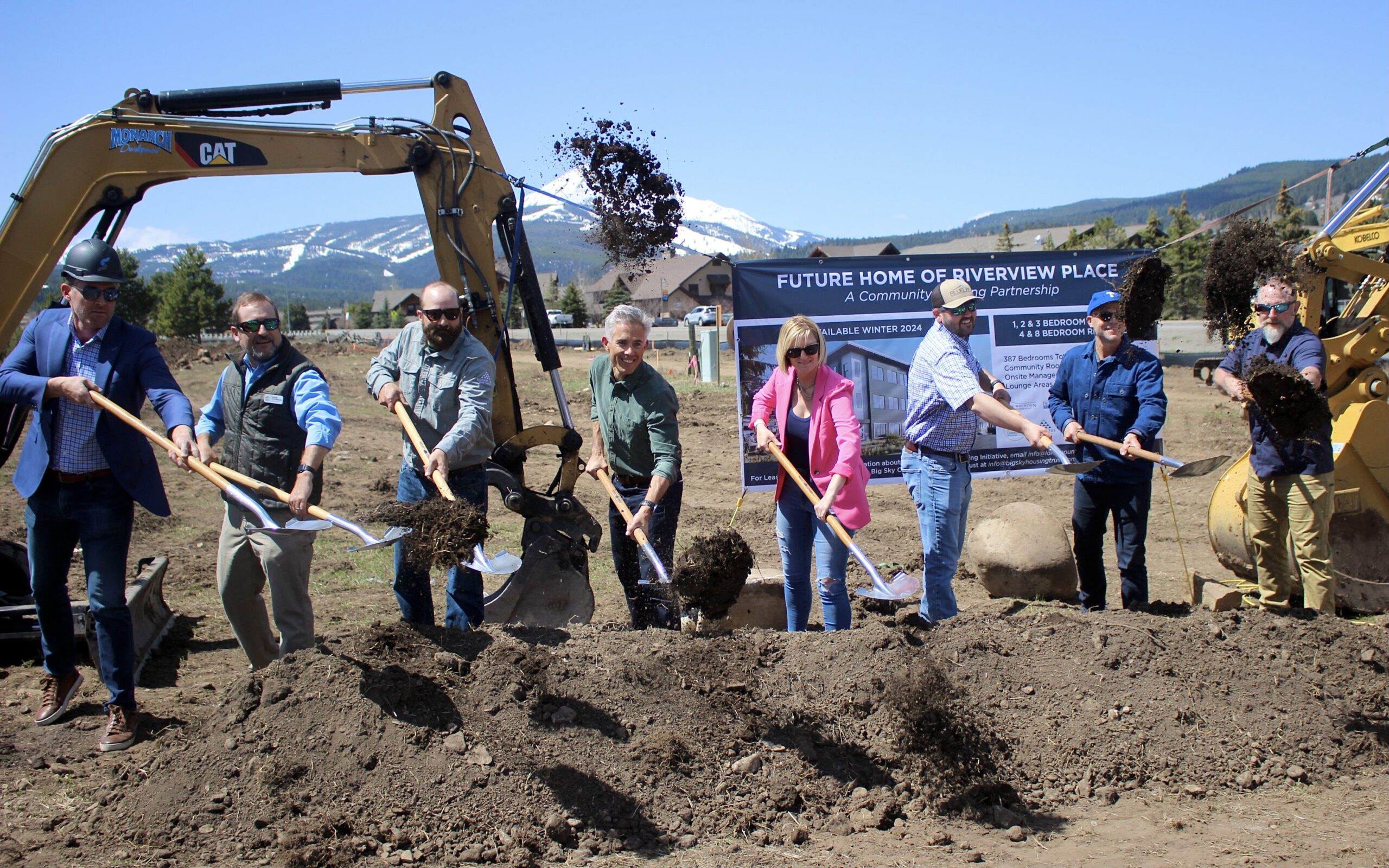
In Bierschwale’s recent debut column with Explore Big Sky, he described the importance of voting on local issues.
Kidd also gave thanks to the community in attendance, the Housing Trust board, the Big Sky Resort Area District and the water and sewer district.
“Without the foresight of those organizations many years ago to increase Resort Tax to 4% and expand the water and sewer treatment plant: no chance we’d be here today,” Kidd said. “We’re here today because of the work those organizations did several years ago and this community will be forever grateful.”
Dozens of Big Sky community members—including all three Gallatin County Commissioners following the Madison-Gallatin Joint County Commissioner meeting in Big Sky—stood on warm dirt to celebrate a win for local housing.
After tossing a few shovelfuls of dirt, O’Connor commented to EBS on the turnout.
“I think it’s a reflection of the acknowledgment within the community of how serious the problem is,” O’Connor told EBS. “That’s one of the benefits we have right now [for our housing efforts]—there’s substantial agreement that this is an issue we all need to be addressing, and I think the attendance today really emphasizes that.”
